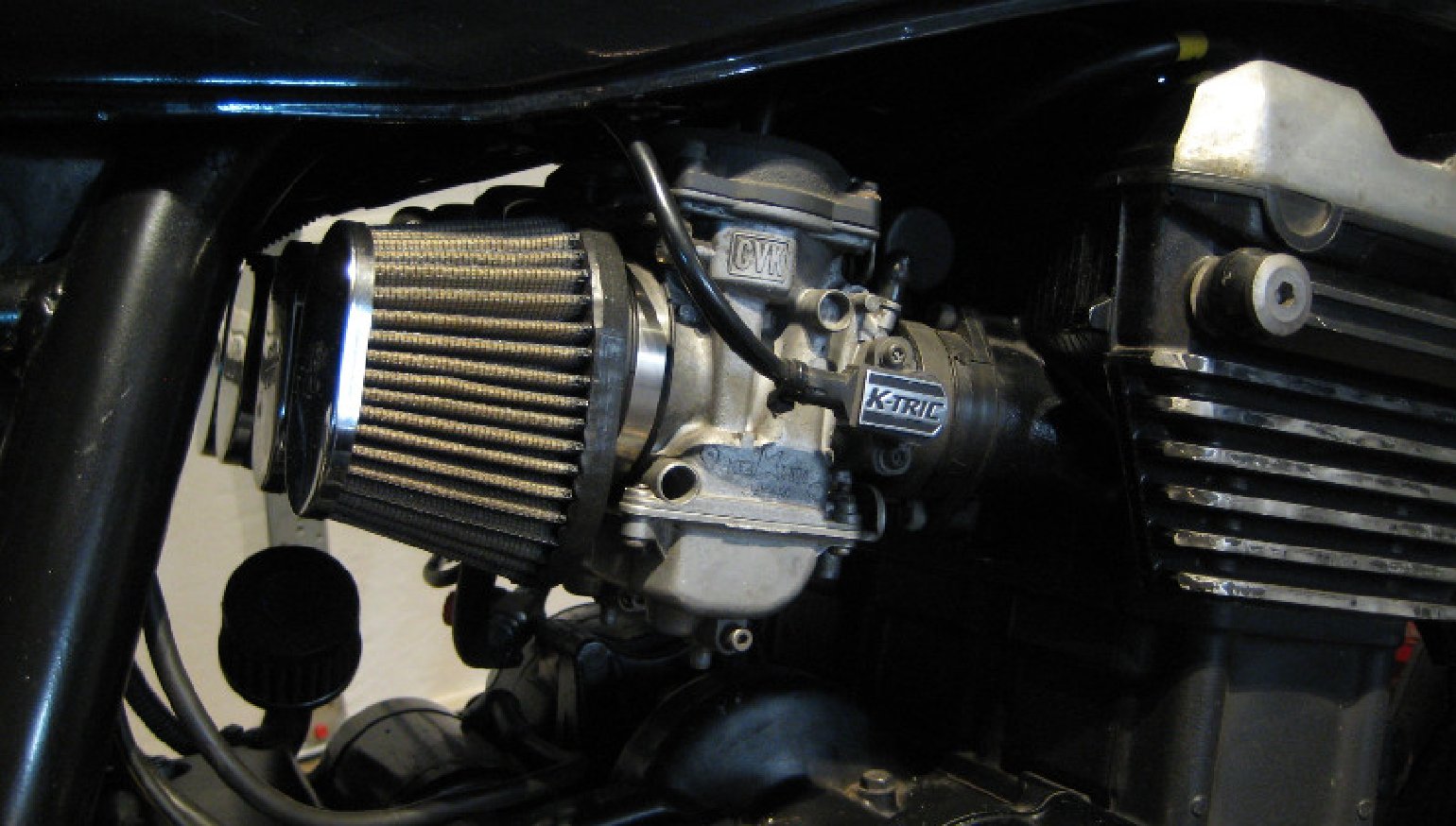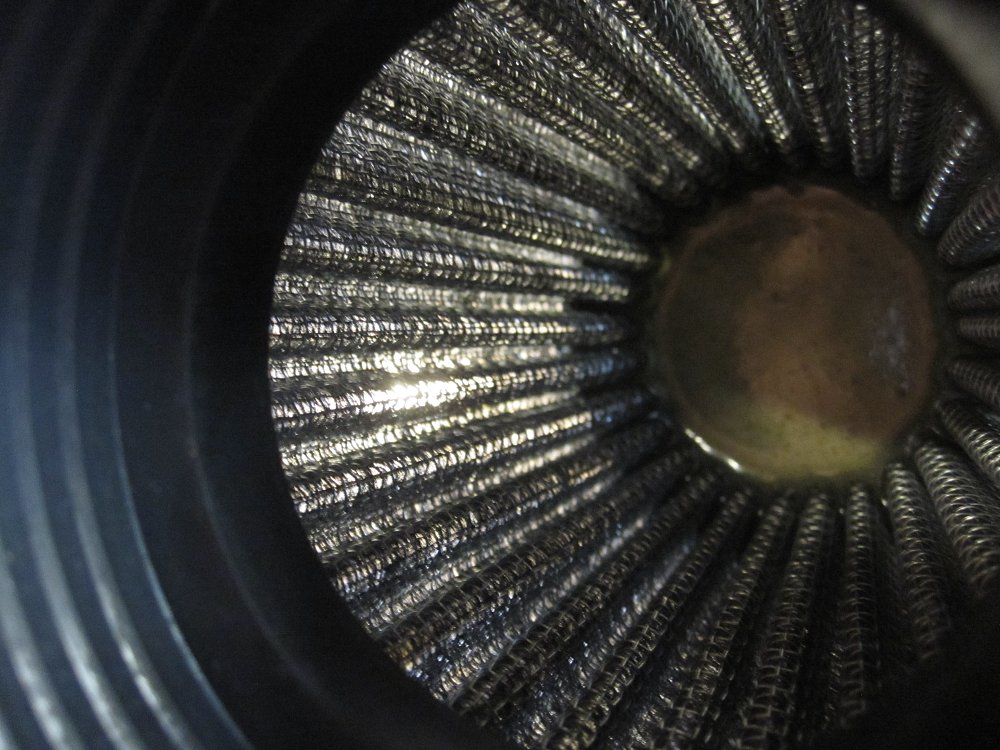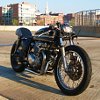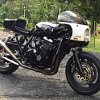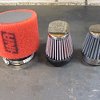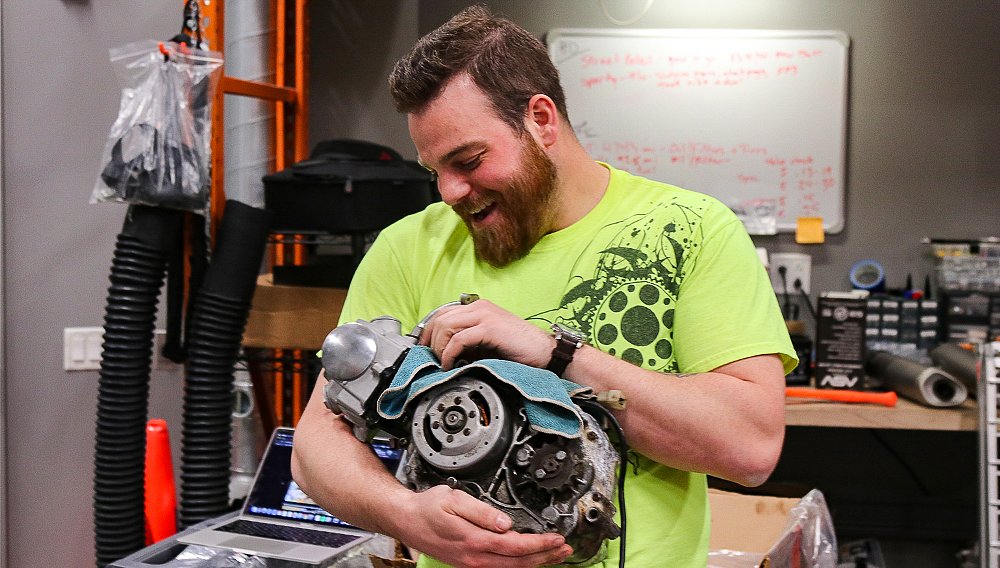Pod filters are small individual air filters that attach directly to the carburetors or throttle bodies on an internal combustion engine. In the motorcycle world, they are typically used to replace a factory air box and filter to improve the aesthetics and performance of a custom bike.
Motorcycle manufacturers create air boxes as a place for a stock air filter to reside, but also to ensure smooth air flow, reduce intake noise and stop rainwater from getting into the engine. Electronic components may be mounted in or on the airbox. Stock airboxes generally take up a bunch of space and rarely look good once you start stripping a bike down to its bare essentials. While removing the air box and installing pod filters can be relatively simple, getting the bike to perform well might be a little challenging. Here are some pros and cons to running pod filters on your bike.
Advantages of pod air filters
Most folks go with pod filters for aesthetics. By ditching the stock airbox, it is much easier to restyle the bike into a café racer, scrambler, chopper, bobber, etc. Particularly with vintage machines, the stripped-down look is timeless when executed properly. Also, in some cases, it is more economical to go with pod filters if the stock air box is damaged, missing or too rare and expensive to replace with OEM parts.
Service intervals for oiled gauze or foam pod filters are about the same as what is recommended in your owner's manual for a stock air filter. A plus for pods is that most of them can be cleaned and re-oiled instead of needing complete replacement, like the paper element filter that comes stock on most bikes. I clean and re-oil gauze pod filters once a year on my street bikes, but if the bike is ridden off-road in dusty conditions, they need service more often.
When it comes to performance, pod filters can potentially allow the bike to breathe easier than the stock airbox. More air equals more performance as long as the appropriate air-fuel ratio is maintained. This means that in some cases the carburetors must be rejetted or the EFI retuned. Generally, this is the biggest hangup for folks when going to pod filters.
Disadvantages of pod filters
I’ve heard plenty of folks tell me, “The bike ran fine with the stock airbox and exhaust. I changed over to pod filters and threw my mufflers away. Why does it run like crap now?!"
I’d ask, “Did you retune your fuel system to compensate for the increased airflow?”
Generally, on bikes with carbs, going up one pilot jet size, one or two main jet sizes and raising the needle by one groove will get the tuning pretty close. You will need a good understanding of your carburetors and which rpm ranges are affected by the different circuits within them. This way you can adjust for rich or lean conditions based on where the issue is in the rev range. Otherwise, you can bring your machine to your local dyno tuner and have them dial it in perfectly for you. Exhaust choice makes a big difference as well.
EFI bikes can self-adjust to a degree, since they use their sensors to read what is going on, so the ECU will compensate by adjusting fueling as needed. Sometimes, however, with pod filters and a free-flowing exhaust, the fuel adjustments needed are outside the stock ECU’s ability, which is why so many folks go with aftermarket fuel tuners after modifying their intake and exhausts.
Tuning issues aside, there are a couple other things to consider. Rain can enter pod filters much easier than a stock filter hidden inside the factory airbox. There are rain socks available, but who wants to put socks on their bikes when they are trying to get their own rain gear on their bodies? If you plan on riding in foul weather, the factory airbox is the way to go. Lastly, consider the electronic components I mentioned earlier. Parts like regulator-rectifiers, relays, fuses and maybe a sensor or two (on a fuel-injected bike) typically live in, on or around the stock airbox on most bikes. Removing it will leave you with a lot of important stuff to find a new home for.

A custom should run as good as it looks
If you are going to install pod filters on your machine, be sure to get the best quality ones you can find. There are quite a few cheap options available that just do not filter the air thoroughly enough, allowing dirt and grit into your cylinders. I have rebuilt several engines that were damaged due to poor air filtration, so good quality filters are worth the investment. They are much cheaper than an engine rebuild, guaranteed.
Overall, I truly love custom bikes, but only if they run as good as or better than stock. A great-looking bike that runs poorly is a bummer. Hopefully now you know what to expect if you are planning to install pod filters on your own bike. As always, I’d love to hear your own personal experiences with pod filters in the comments section.




